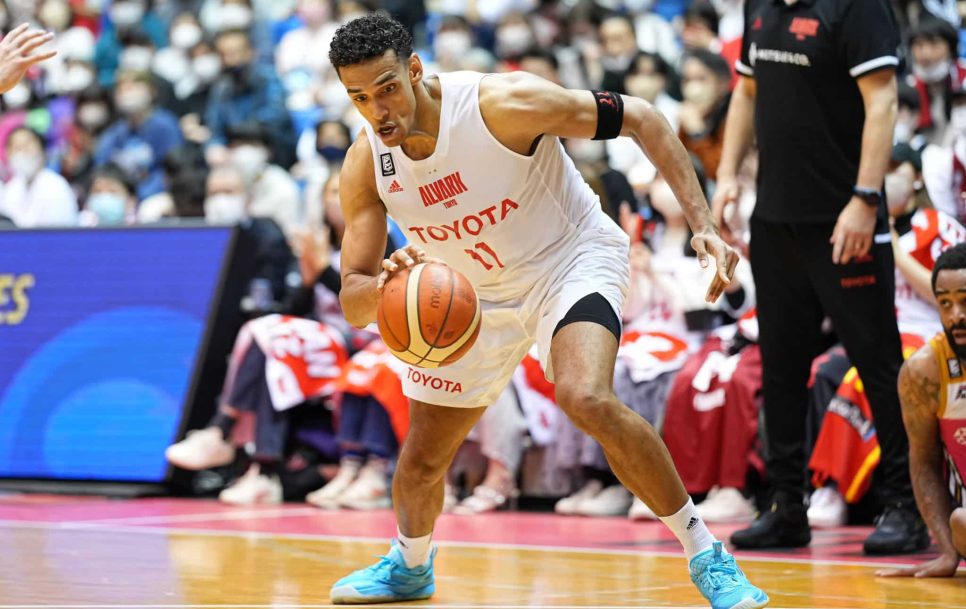Brainpower and money: Japan accelerates its basketball boom
On April Fool’s Day 2015, a significant event caused some smiles but was far from a joke. This was the birth of the B.League, a basketball league that has steadily risen in prominence over the years. It promises an exciting future for the sport in Japan and aims to become the second-strongest league in the world after the NBA.
The B.League has garnered plenty of interest this off-season thanks to numerous moves. One of Europe’s most respected young head coaches, Lassi Tuovi, signed with Yokohama B-Corsairs.
He will link up with Estonian national team center Maik-Kalev Kotsar, who has two EuroLeague seasons under his belt with Baskonia.
While Kotsar’s decision to move to Japan was somewhat surprising, it wasn’t a shock. The same can’t be said about Johannes Thiemann.
The 30-year-old German had the best season of his career in the EuroLeague, averaging 12.7 points and 5.2 rebounds per game for ALBA Berlin.
In a traditional basketball market, that should’ve earned Thiemann a nice EuroLeague contract with a top club. His teammate Luke Sikma played great for ALBA the season prior and earned a move to EuroLeague powerhouse Olympiacos. Well, the world champion from 2023 will move to Gunma Crane Thunders in Japan.
However, Japan doesn’t attract only Europeans or the many Americans plying their trade there. Yuta Watanabe, who played in the NBA for years, returned home for the new season and will earn at least 4.5 million euros per season with the Chiba Jets.
It is important to note that Japan is not a retirement league where players go to end their careers. A good example is Ondrej Balvin, who played in Gunma during the 2021/22 season, then returned to Europe with Prometey and was one of the best centers in the EuroCup for two seasons before returning to Japan.
Big plans
The biggest weapon for the Japanese in attracting players and coaches is money, both in terms of salary and providing other conditions. For example, Arturas Gudaitis, a Lithuanian center who plays for Tokyo Alvark, has stated that basketball players, especially foreigners, are treated like royalty in Japan. Clubs also invest significant sums in the team’s infrastructure.
Although the Japanese league has always attracted foreign players of a decent level, the recent influx of good players and coaches is a testament to the league’s growing competitiveness. The local basketball federation’s efforts to pour money and brainpower into popularizing the league have not gone unnoticed, promising a bright future for international basketball in Japan and keeping the fans on the edge of their seats.
Last August, a vision for what the B.League should look like in a few years was published. Among many exciting changes are:
- Depending on the results, teams can be promoted or relegated between the different divisions of the B.League. However, this will be abolished starting from the 2026/27 season. The top league will feature teams that draw at least 4,000 spectators on average and have a minimum revenue of seven million euros. This change aims to assure clubs that a long-term project won’t crumble within a year or two due to poor on-court performance.
- The B.League’s top division currently has 24 teams divided into three conferences. This number will be reduced to 18 from the 2026/27 season. Still, in the following season, all clubs meeting the set criteria will be accepted into the elite, even if there are 50 of them.
- Salary caps will be introduced in both the first and second divisions. For example, the top league teams can spend up to 4.7 million euros on salaries per season, with a cap floor of 2.9 million euros. Additionally, similar to the Major League Soccer (MLS) in North America, each team can hire one player whose salary does not count towards the cap. This player can be either Japanese or foreign, with no salary limit.
- Currently, each team can hire three foreign players, but only two are allowed on the court simultaneously. However, they will be free to play together in a couple of seasons, underscoring the league’s commitment to attracting and utilizing international talent.
- The B.League will implement a draft open to Japanese and foreigners, including those fresh from high school.
Looking at the financial figures, it’s clear that no Japanese club will soon assemble a star-studded roster. However, players of Kotsar’s caliber are much better valued in Japan in terms of salary compared to Europe.
Moreover, the Japanese league is not trying to reach a new level in international basketball solely through money but also through well-thought-out actions. Favoring clubs with long-term plans, introducing a draft, and relaxing foreign player rules all put the B.League on the right track.
Lastly, it is understandable that as long as the B.League operates with the restriction of three foreign players, it will likely never reach the EuroLeague level in terms of play. Despite Japan’s commendable performance at last year’s World Cup, more than their pool of players and quality will be needed to rise to the world’s second-strongest league predominantly on their own.
However, the EuroLeague should closely monitor the Japanese regarding player care, salary, and attracting players to avoid falling behind the curve.







